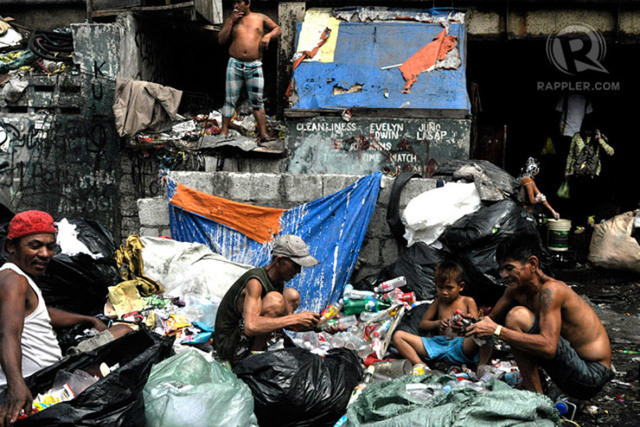DU30’S CRONIES WAR VS. OLIGARCHS: 1 out of 5 Pinoys have gone hungry in last 3 months, highest rate since 2014 – SWS
.

MANILA, Philippines — At least one out of every five Filipinos have experienced involuntary hunger in the past three months, according to recent survey conducted by the Social Weather Stations (SWS), the results of which were released Tuesday.
According to SWS, 20.9 percent of Filipinos — or 5.2 million — went hungry at least once — the highest hunger rates under President Rodrigo Duterte’s administration and since a 22.0 percent rate in September 2014.
This is 4.2 percentage points higher than the 16.7 percent hunger rate recorded in May 2020, back when community quarantines deprived some people of income because their jobs could not be done through telecommuting.
“The 20.9% Hunger rate in July 2020 is the sum of 15.8% (est. 3.9 million families) who experienced Moderate Hunger and 5.1% (est. 1.3 million families) who experienced Severe Hunger,” SWS said in its report.


“Moderate Hunger refers to those who experienced hunger ‘Only Once’ or ‘A Few Times’ in the last three months. Meanwhile, Severe Hunger refers to those who experienced it ‘Often’ or ‘Always’ in the last three months,” it added.
Both moderate hunger and severe hunger rose from the May 2020 survey’s figures — from 13.9 percent to 15.8 percent in July for moderate hunger, and from 2.8 percent to 5.1 percent for severe hunger.
The SWS said that it conducted the survey from July 3 to 6 through mobile phone interviews — which means that hunger rates increased despite the government’s provision of financial assistance and in-kind goods, and even if some sectors were allowed to resume work.
Respondents were asked whether their family experienced hunger due to a lack of food to eat. Those who answered yes were further asked on the instance of their hunger.
The Visayas and Mindanao registered the highest hunger rates at 27.2 percent and 24.2 percent, respectively; while Luzon and Metro Manila saw 17.8 percent and 16.3 percent.
The SWS also found out that hunger was higher among people living in lower socioeconomic status and lower educational attainment. However, the survey also showed that hunger increased no matter what educational attainment of the respondent is — even if he finished tertiary education.
“Compared to May 2020, the incidence of Hunger rose among households of non-elementary graduate respondents, up from 21.1% to 35.6%, among households of elementary graduate respondents, up from 24.4% to 26.8%, among households of junior high school graduates respondents, up from 16.5% to 20.9%, and among households of college graduate respondents, up from 6.9% to 8.9%,” the SWS said.
The survey involved an interview of 1,555 adult Filipinos through mobile phone and computer-assisted telephone interviewing, subdivided according to population density, with 306 from Metro Manila, 451 from Balance Luzon, 388 from the Visayas, and 410 from Mindanao.
The SWS maintains sampling error margins of ±2% for national percentages, ±6% for Metro Manila, and ±5% for Balance Luzon, ±5% for the Visayas, and ±5% for Mindanao.
/atm


SIGN UP TO RECEIVE OUR EMAIL
.
The most important news of the day about the ASEAN Countries and the world in one email: [email protected]
7.22.2020









